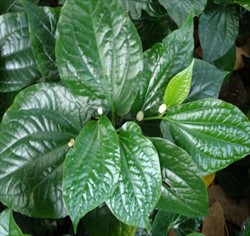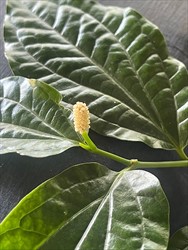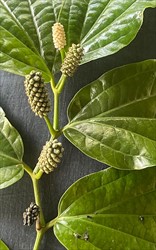- Widespread distribution. In Erect, smooth, brownish stems. Leaves, alternate, simple, heart-shaped, dark green, glossy. Flower clusters creamy-white, barrel-shaped spikes. Spikes bisexual or unisexual. Fruit with single seed.
- Spread: underground rhizomes and stem pieces readily root. Longer distances via international trade (used as a food wrapper and in folk medicines).
- Bioco
- Cultural control: hand-pulling; collect stem pieces and burn. Avoid using topsoil where lolo pepper grown previously.
- Chemical control: two or three applications of glyphosate.








